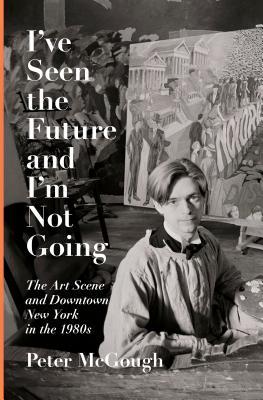What do you think?
Rate this book


304 pages, Hardcover
First published September 17, 2019
He also told me, "Peter, you know I'm a genius." I'd never heard anyone say that, except for Truman Capote on some TV show.Maybe when he was writing this, McGough really had never heard the Stable Jeenyus proclaim it.
David was generous but often lacked normal people skills. He would say whatever popped into his head with no filter: "You look so fat," or "You got old."Throughout the entire memoir, that Davis was "on the spectrum" was obvious, but they didn't know it until the next to last page ("a few years back")
These three great friends and artists - Andy [Warhol], Jean-Michel [Basquiat], and Keith [Haring] - who were considered yesterday's news before they died, would all once again become best-selling artists, with Andy and Jean-Michel achieving auction records.
It's almost impossible to convey to a young person today what it was like then, when so little was known about AIDS.